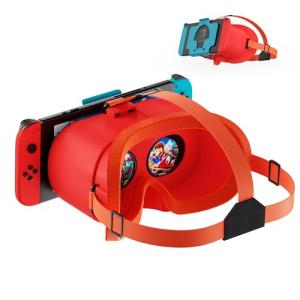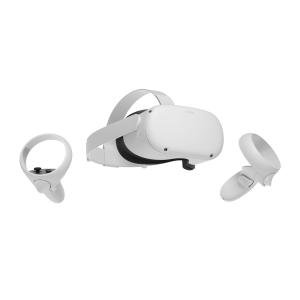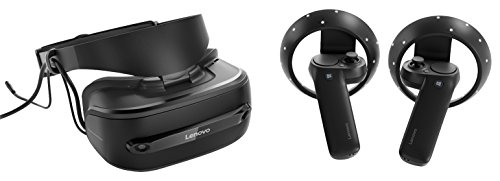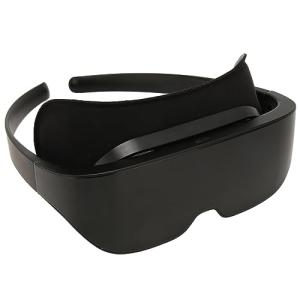Have you ever imagined leveling up your skills without the stress of real-world consequences? That’s where Virtual Reality Training comes in. It offers a unique way to practice and hone your skills in a safe, controlled environment. Whether you’re into healthcare, aviation, or even corporate training, VR lets you dive deep into immersive experiences that just can't be replicated in a classroom.
With Virtual Reality Training, you get to engage with your tasks in a realistic setting. Picture this: instead of just reading a manual or watching a video, you step into a virtual world where you can actually perform the actions needed for your job. It’s like having a hands-on mentor right beside you, guiding you every step of the way. Plus, you can repeat scenarios as many times as you need until you feel confident.
And let’s be honest, training can sometimes be boring. VR changes that completely. It keeps you engaged and excited about learning. You’ll find yourself eager to jump back in, tackle challenges, and actually enjoy the process of acquiring new skills. That’s the magic of Virtual Reality Training—it makes learning feel less like a chore and more like an adventure!
How VR Training Boosts Learning Engagement
Virtual Reality Training is changing the way we learn and engage with new concepts. Imagine putting on a headset and being instantly transported to a different world where you can practice skills in a safe, interactive environment. This kind of immersive experience grabs your attention and makes learning feel less like a chore and more like an adventure.
One major perk is that it caters to different learning styles. Visual learners get to see things in action, while kinesthetic learners can actually move around and interact with elements in the virtual space. This hands-on approach helps retain information better because you’re doing, not just watching or listening.
Another great aspect is the element of gamification. Many Virtual Reality Training programs include challenges, rewards, and even storylines. This makes learning feel like playing a game rather than traditional studying. And let's be honest, who wouldn’t be pumped to earn points or unlock new levels while mastering a skill?
Plus, you can practice as much as you need without real-world consequences. Want to work on a presentation? You can rehearse in front of a virtual audience. Need to learn a complex procedure? You can repeat it in the VR training space until you’ve nailed it. This kind of freedom really enhances your confidence when it’s time to perform in the real world.
In short, Virtual Reality Training makes learning fun, interactive, and completely effective. With all its advantages, it’s no wonder more organizations are embracing this innovative approach to training. Are you ready to dive into the future of learning?
HTC Vive Pro Eye Virtual Reality Headset Only
Product information
Product Review Score
4.61 out of 5 stars
210 reviewsProduct links
Top VR Training Tools You Should Try
If you’re diving into the world of Virtual Reality Training, you’ll want the best tools to help you along. Here’s a quick rundown of some top-notch VR training tools that can take your experience to the next level.
1. Oculus Quest 2This stand-alone headset is super user-friendly and doesn’t require any wires or external sensors. With a library packed with training programs, it’s perfect for both beginners and pros. You can work on skills in an immersive environment—ideal for everything from medical training to team-building exercises.
2. HTC ViveVive is a fantastic option if you’re looking for high-quality graphics and tracking. It’s incredibly versatile and can be set up in a larger space, allowing for multi-user training setups. Whether you’re learning complex procedures or simulating real-world scenarios, this tool has got you covered.
3. VirtaMedIf you’re into healthcare training, you’ve got to check out VirtaMed. They offer realistic simulations for medical training that lets professionals practice procedures without any risk. It’s a great way to gain hands-on experience before stepping into real-life situations.
4. StrivrStrivr focuses on VR training for athletes and businesses. They provide a platform that enhances performance through immersive experiences. Whether it’s improving focus or allowing teams to practice scenarios, you’ll find it’s an effective tool for skill-building.
VR Headset for Nintendo Switch & Switch OLED, Upgraded Switch Virtual Reality Glasses with Adjustable HD Lenses and Comfortable Head Strap, Labo VR Kit 3D Goggles for Switch Accessories
Product information
€35.17
Product Review Score
4.37 out of 5 stars
198 reviewsProduct links
Real World Applications of VR Training
Virtual Reality Training is changing the game in various industries. From healthcare to aviation, it's opening up amazing opportunities for hands-on learning without the real-world risks. Imagine a doctor practicing a complicated surgery in a fully immersive environment before ever stepping into an operating room. That’s the power of VR training!
In the corporate world, companies are using Virtual Reality Training to enhance employee onboarding and skill development. Picture stepping into a virtual office where you can practice customer interactions or team meetings. It feels real, and you get valuable feedback right away. This way, employees hit the ground running, feeling more confident and prepared.
The military has also embraced Virtual Reality Training to simulate real combat scenarios. This allows soldiers to prepare for missions in a safe setting. They can develop tactics, refine their skills, and build teamwork without the dangers that come with field training. It's effective and efficient training that saves time and resources.
Even industries like retail are getting in on the action. Virtual Reality Training can simulate a store environment for staff to practice sales techniques and customer service skills. This feels much more engaging than traditional role-playing methods, and it often leads to better retention of information.
Overall, Virtual Reality Training is reshaping the way people learn and develop skills. By creating immersive experiences, it prepares learners for the real world, making training programs not only effective but also fun.






